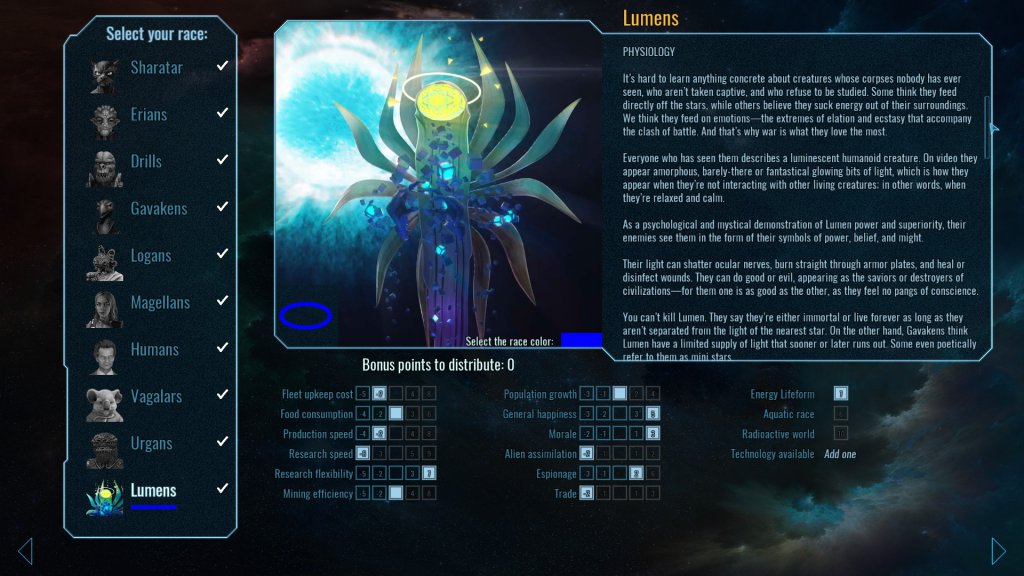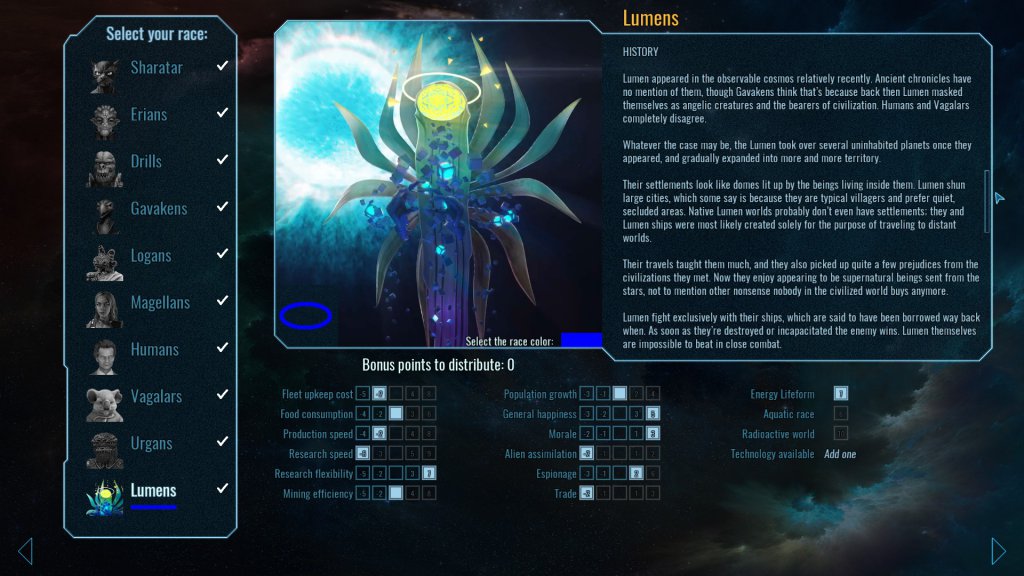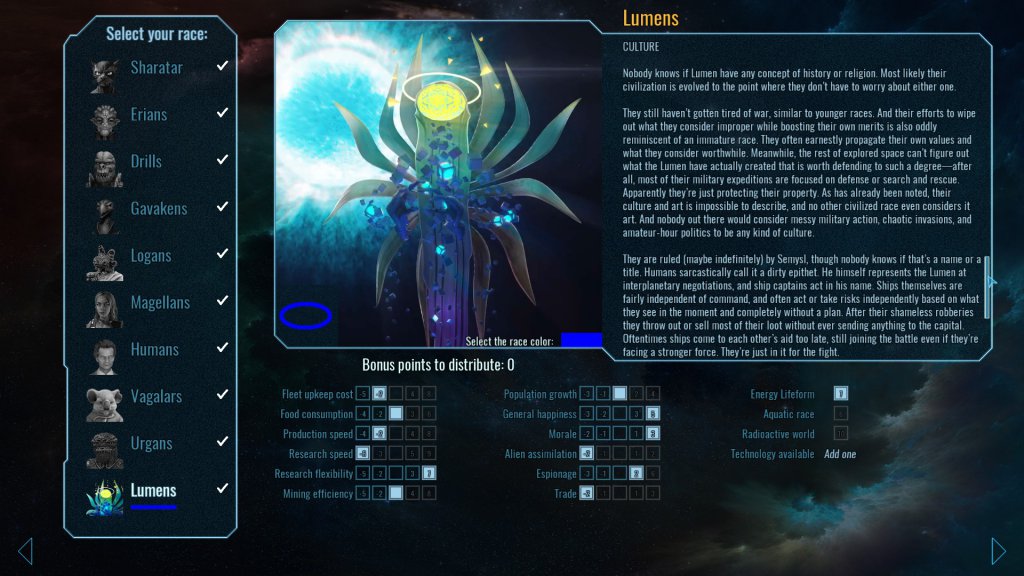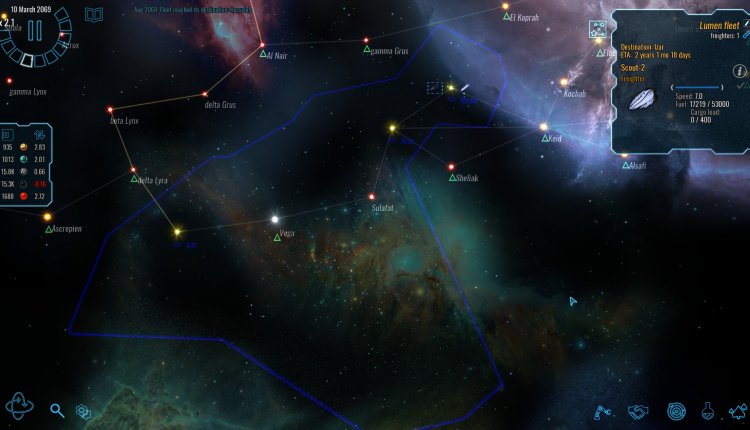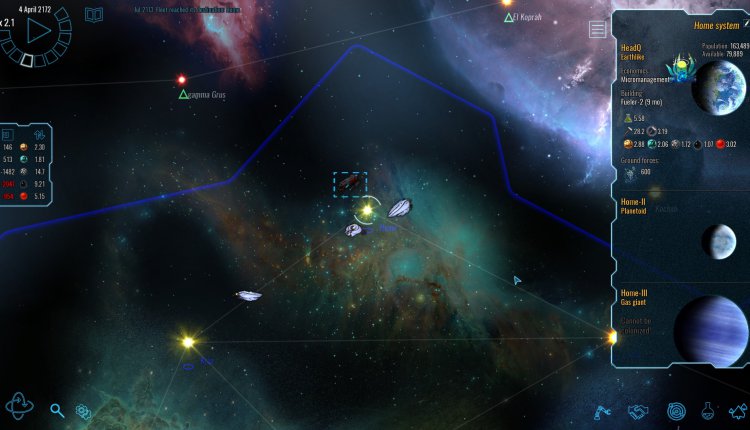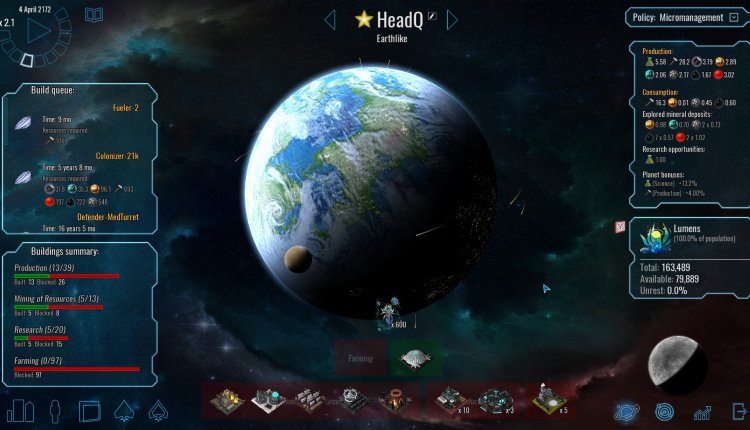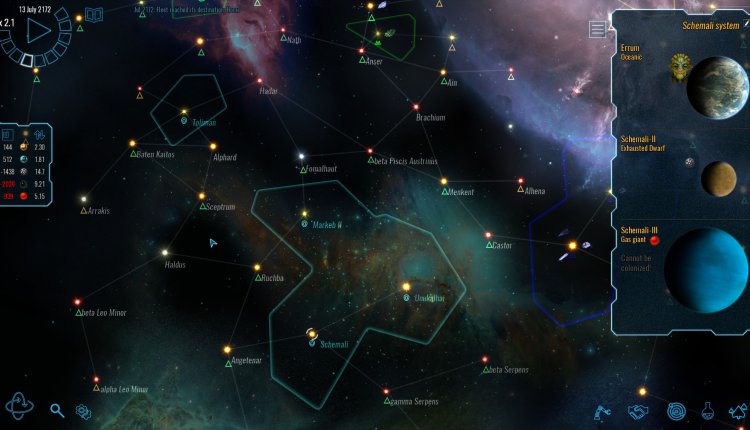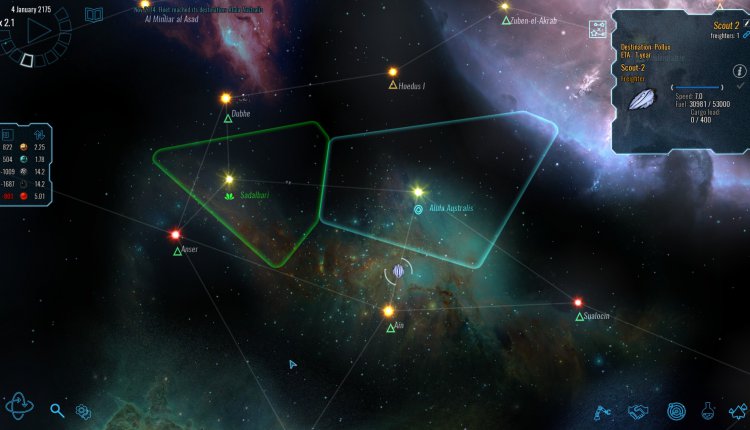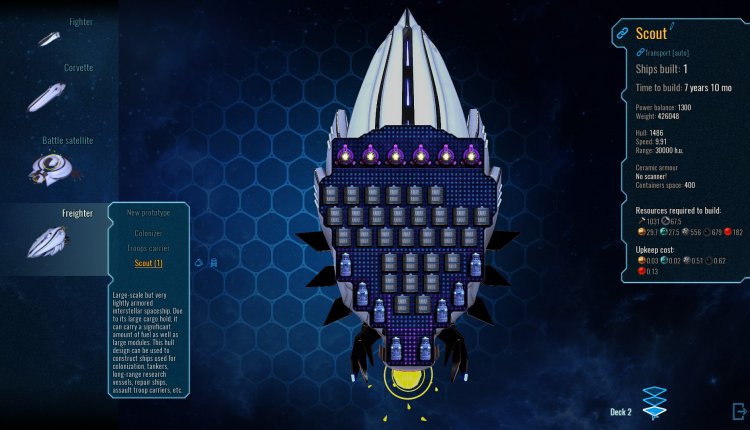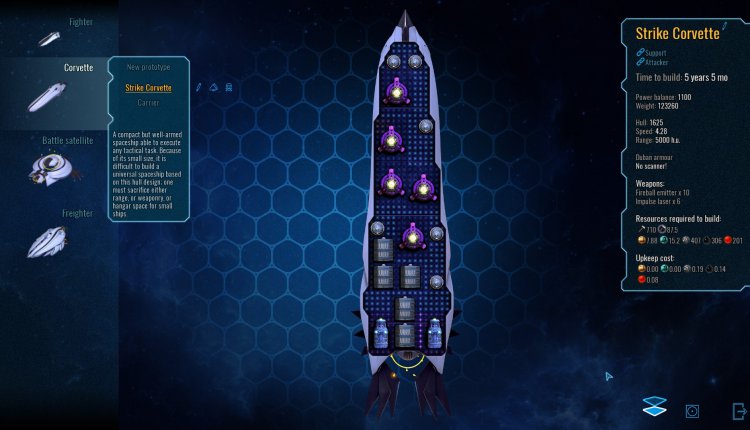Since I already have a bit of time with Polaris Sector under my asteroid belt, I was extremely excited to get to play its new DLC, Lumens. In addition to a new race — the Lumens — there is a shipload of enhancements implemented to improve an already stellar space 4X title.
The Lumens
The Lumens are a race who, initially, seem to be “angels of light” — they are composed entirely of light. They have the ability to take any form and can even adjust how much light they emit. While this angelic pretense seems all well and good, the Lumens are actually more akin to gleaming evil; they simply like to fight. Not a lot is known about their history, so most of their past is pure conjecture, varying greatly depending on which race you ask. Very important as well is the fact that they are impossible to beat in close combat.
Since they are luminescent, the first thing that you will probably notice is that they have no need for farms! This greatly affected the way I played, right out of the gate. Not having to build food supplies (farms) purely meant more room for other buildings. Granted, you still need atmospheric domes on non-Earthlike planets, but it is still great not having to worry about feeding your people (lights) while simultaneously freeing up all of those other slots.
Planet and Galaxy Generation
Speaking of planets, this gigantic addition also changes the variation between them. Now more than ever, you will need to pay close attention to the individualization of all of the planets on the map. They took great strides in Lumens to differentiate the planets from one another. Some will contain usually uncommon, or nearly impossible to find, minerals, while others will have a new, additional research component to them. You will want to jump on the planets/planetoids with the small research icon attached.
In fact, not only has the planet initiation been upgraded, the entire galaxy generation system has been improved upon. While you can still adjust the number of stars, planets, sector minerals, etc. as before, now you can alter the number of wormholes that appear. Do you feel like gambling a Scout right now? Should you guard them yet? Luckily, you have a general idea as to how many there are. A further improvement sees you able to adjust how many artifacts become available each game. Finally, and definitely not limited to Elliptical Galaxy with Central Segment, you can choose where you start each game: at the center or on the edge.

Research
The most significant areas of research for the Lumens are the Impossible Constructions. Obviously, they are not truly and technically impossible, it’s just that they will take a long time and a lot of research to acquire. The most significant update to research in terms of the game itself is the fact that each race now has their own, specific tech tree! This greatly changes the approach to research from what you may have been used to. No more relying on a set pattern if you previously employed that particular approach or philosophy. This is a vast improvement both for developing each race’s playstyle and tactics, as well as for overall Polaris Sector replayability. Additionally, during game setup, there is now a Research Speed Slider. This sets how quickly (or slowly, if you prefer) each race in the universe can access their tech. Do you want each race to rush toward their highest levels? Or do you favor keeping your latest designs pertinent for a longer amount of time than they would be normally?

Designers
Ah, my favorite part. During every game of Polaris Sector, I spend an inordinate amount of time designing ships. As new tech becomes available, I constantly tweak and upgrade a massive roster of personal, task-specific, self-designed ships. Even before Lumens, when I start a new game, there are three ships I always build at the very beginning, regardless of race.
Now, there is a Fleet Designer! You can stage entire fleets, as well as specifying their tasks, then queue up a fleet to be built with a single click. If you choose, you can use multiple production planets to build the fleet at an exact location. Additionally, upgrading fleets can be set to be computer generated as well. If you switch out a ship or two, your AI will take care of the shipbuilding however you instruct it. This supplement to the game is completely mind-blowing for me. Change a ship in your defense fleet? Change an entire fleet’s function? No problem. Polaris Sector will handle it for you. It builds the ships you want, in their fleet and in formation. All of this leads to my second favorite part…
Automation
You can now upgrade and repair entire fleets and, if wanted or needed, you can automatically replace lost fighters for a carrier. Once you’ve built a transport ship, you can automate moving Battle Stations (Defenders) between stars. The best part of all of this is the ability to now set a Rally Point! This can be set to anywhere so that your new ships (or fleets) will instinctively go there to await further orders. By using a fleet design, you can even have a specific fleet (or multiple fleets even) assembled there, regardless of any other ships being at the same point.
If it sounds like I am excited with all of these changes, it’s because I am. Everything added in Polaris Sector: Lumens made playing it even more fun than it was already. The introduction of fleets and the new automation especially garnered a lot of my attention. Of course, adding a new race is always good, but implementing one so different than the rest was like lighting the birthday candles on the radiant cake.
Purely as a side note: Why couldn’t I have picked the Magellans (the enemy race highlighted) in this universe? I ran across this relatively early, so I imagine that it became an impenetrable fortress later (actually, I’m getting closer to finding out).
Note the three Earthlikes, side-by-side:
